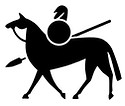
SENIOR RESEARCHERS

Margit Berner | Department for Anthropology, Natural History Museum, Vienna
Margit Berner is a human biologist and anthropologist, who works at the Natural History Museum Vienna, Austria and also teaches at the University of Vienna. As a curator at the Museum’s Anthropology Department, she researches and publishes widely on questions of physical anthropology, osteology and paleopathology as well as the history of anthropology and collections, including from the Nazi period.
In the HistoGenes project Margit Berner is leading, coordinating and supervising the anthropology project team of the Natural History Museum Vienna.

Zsolt Bernert | Hungarian Natural History Museum, Budapest
Zsolt Bernert is the Director General (2019-) / Chief Museologist Director General of the Hungarian Museum of Natural Sciences, and his current research focuses on the embertological analysis of the occupation and early Árpád period populations of Budapest and Pest, the anthropological study of medieval cemeteries excavated in Budapest.

Falko Daim | Institute for Medieval Research, Austrian Academy of Sciences
Falko Daim is Professor Emeritus at the Faculty of History and Cultural Studies, Department of Prehistory and Historical Archaeology, University of Vienna, Austria.
He coordinates the Austrian sites for HistoGenes.

Corina Knipper | Curt Engelhorn Zentrum Archäometrie, Mannheim
Cornelia Knipper is a researcher at CEZA. Her work and research focuses on the investigation of human and animal nutrition and mobility in prehistory and early history using isotope analysis.

Harald Meller | Landesamt für Denkmalpflege und Archäologie/ Landesmuseum für Vorgeschichte Sachsen-Anhalt, Halle/Saale
Prof Dr Harald Meller is Director of the State Office for the Preservation of Monuments and Archaeology in Saxony-Anhalt and, since 2009, Honorary Professor of European Archaeology at the University of Halle.

Balázs Mende | Laboratory of Archaeogenetics, Budapest
Balázs Mende is the head of the Archaeogenetic Laboratory and a research fellow of the Hungarian Academy of Sciences. His research focuses on population and haplogroups.

Anna Szécsényi-Nagy | Laboratory of Archaeogenetics, Eötvös Loránd Research Network, Budapest
I studied between 2002-2009 biology (genetics) and archaeology (with specialization in prehistory and migration period) at the ELTE University Budapest. I become and archaeogeneticist in Mainz (Germany) where at the Johannes Gutenberg University I worked on my PhD topic of "Population history of the Neolithic Carpathian Basin" between 2010-2013, graduated in 2015.
Since 2014 I have been working as a research fellow in the Laboratory of Archaeogenetics of the Institute of Archaeology, Research Centre of the Humanities of the Hungarian Academy of Sciences that has been reorganized in 2019 under the Eötvös Loránd Research Network.
As a head of the ancient DNA laboratory, my task is to help the project through coordinating collaborations, project planning, supervising biology students and laboratory work and helping the interdisciplinary evaluation of the results.
See her Researcher of HistoGenes-Video here.

Krishna Veeramah | Department of Ecology and Evolution, Stony Brook University, New York
I received both my B.Sc. in 2003, and Ph.D. in 2008 from University College London. His Ph.D., conducted under the supervision of Mark Thomas, examining the distribution of genetic variation in Africans. I then moved to UCLA as part of John Novembre’s lab where I looked at the genetic architecture of European population isolates. In 2010 I joined Michael Hammer’s lab at the University of Arizona in order to lead a project comparing patterns of genomic variation on the autosomes and X chromosome in apes. I joined the faculty in the Department of Ecology and Evolution at Stony Brook in January 2014 as part of the new initiative in human evolutionary biology where I now run the Veeramah Lab.
The primary focus of the Veeramah Lab is Evolutionary Genomics and Paleogenomics. We work on various species, ranging from humans and other non-human primates, through to Three-spined stickleback. We are particularly interested in analyzing genomic data from multiple time points to study evolution. I have a long-standing interest in using paleogenomic data to better understand post-Roman early Medieval Europe, spurred by organizing the DNA and History seminar series while a Postdoc at UCLA under the supervision of Patrick Geary.

